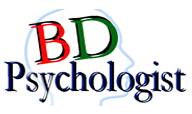Separation Anxiety Disorder
Separation anxiety disorder is a condition in which a person has excessive anxiety regarding separation from places or people to whom he or she has a strong emotional attachment. Included with the childhood disorders in DSM-III through DSM-IV-TR, separation anxiety disorder has now been moved because of research that links it to the anxiety disorders and the growing recognition that it occurs in adults. In fact, the lifetime estimate of separation anxiety disorder in childhood is 4.1%, whereas the rate among adults is 6.6%. Although about one-third of adults with separation anxiety disorder had it in childhood, the majority of adults had a first onset in adulthood. In children, the strong emotional attachment is likely to a parent; with adults, the attachment
might be to a spouse or a friend (Black & Grant, 2014)
Separation anxiety disorder should not be confused with separation anxiety that occurs as a normal stage of development for healthy, secure babies. Separation anxiety typically starts at around 8 months of age and increases until 13–15 months, when it begins to decline.
Symptoms of Separation Anxiety Disorder(DSM-5)
- Excessive distress when separated from home or caregivers or when anticipating separation.
- Persistent and excessive worry about losing, or harm coming to caregivers.
- Persistent reluctance or refusal to go to school or elsewhere because of separation.
- Excessive fear of being alone.
- Reluctance to go to sleep without caregivers nearby.
- Repeated nightmares à themes of separation.
- Repeated complaints of physical symptoms when separation from caregivers occurs or is anticipated.
- Onset prior to age18 (Halgin, R.P et al.2003)
- Persist 4 weeks
- symptoms significantly impair the child’s ability to function in daily life.







